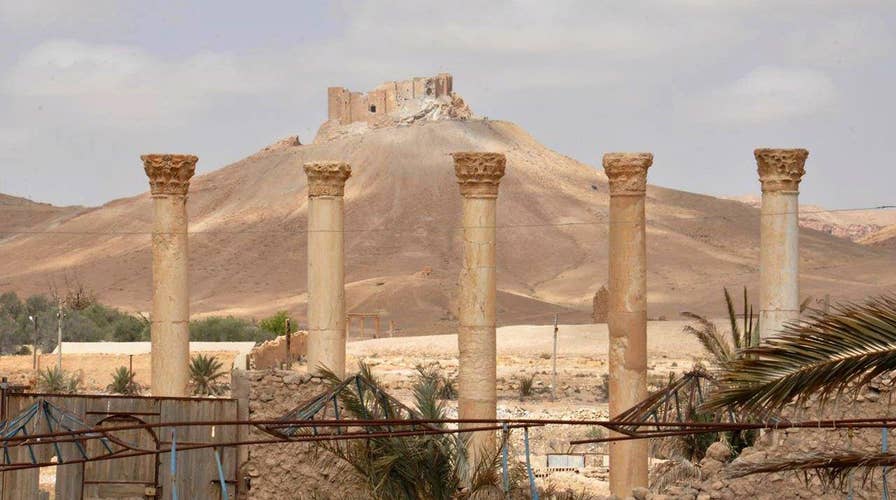What recapture of Palmyra means for fight against ISIS
Defcon 3: J.D. Gordon breaks down victory in historic city and analyzes the role of Putin and Assad in Syria
BEIRUT – ISIS militants re-entered the historic city of Palmyra in central Syria on Saturday for the first time since they were expelled by Syrian and Russian forces nine months ago.
The activist-run Palmyra Coordination network said the militants had nearly encircled the city and entered its northern and northwestern neighborhoods. The group, which maintains contacts inside the city, said ISIS fighters were approaching the city's UNESCO heritage site as well.
Osama al-Khatib said government soldiers were fleeing Palmyra.
"The army as an institution has dissolved," he said. Some soldiers and militiamen remain in the city, along with 120 families who have not been able to leave, Khatib said. He spoke to The Associated Press from Gaziantep, Turkey.
"There is strong fighting on all sides," he reported. "There is no exit except through a corridor to the west."
The dramatic reversal in Palmyra comes days after ISIS militants in the Iraqi city of Mosul launched a major counterattack that surprised Iraqi soldiers, killing at least 20 and halting their advance. Iraqi special forces units have entered the eastern outskirts of the largest remaining ISIS-held city, but their advance has been greatly slowed by both a desire to limit civilian casualties and the resilience of the ISIS fighters.
On Saturday U.S. Secretary of Defense Ash Carter announced that an additional 200 U.S. soldiers would be dispatched to Syria to accelerate the push on the self-declared ISIS capital of Raqqa. The 200, to include special operations troops, are in addition to 300 already authorized for the effort to recruit, organize, train and advise local Syrian Arab and Kurdish forces to fight ISIS.
"These uniquely skilled operators will join the 300 U.S. special operations forces already in Syria, to continue organizing, training, equipping, and otherwise enabling capable, motivated, local forces to take the fight to ISIL," Carter said, using an alternative acronym for the extremist group. "By combining our capabilities with those of our local partners, we've been squeezing ISIL by applying simultaneous pressure from all sides and across domains, through a series of deliberate actions to continue to build momentum."
In Palmyra, Mohammad Hassan Homsi of the Palmyra News Network reported that a military division withdrew from the city earlier Saturday without leaving a way out for civilians. According to Homsi, only 350 families had returned to the city of its original 30,000 inhabitants after the government retook the city to great fanfare in March.
ISIS militants were shelling the government's military airport to the east of the city, according to the Coordination group.
The Britain-based Syrian Observatory for Human Rights says the militants reached the city's Tadmor Hospital and its wheat silos.
The militants advanced on Palmyra after seizing several government positions, oil fields, and strategic hilltops in the surrounding countryside in a lightning three-day campaign.
Earlier Saturday, the militants' Aamaq News Agency claimed the group shot down a government warplane in the Jazal oil fields west of the city.
The Observatory said the jet had crashed for reasons unknown. It reported the militants had taken the oil fields.
During the 10 months that ISIS held Palmyra, from May 2015 to March 2016, the militants dynamited several of the city's famed ancient Roman monuments and executed its archaeological director.
After the city was retaken, the Russian government staged a classical music concert in the city's soaring Roman amphitheater last May to celebrate the success. The Syrian and Russian government maintain they are defending the global community against Islamic terrorism in the country's devastating five-1/2-year war.
After taking Palmyra, the two states turned their attention to wiping out the internal opposition in Damascus and Aleppo, leaving the historic city relatively unguarded.
Syrian state media had no comment.

